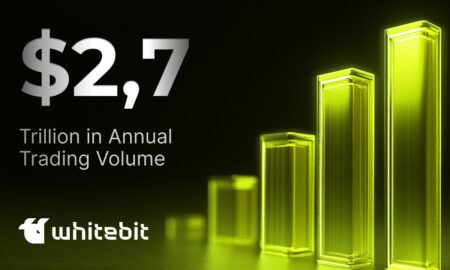Comment of the Day @Xentagz
“Bitcoin is a tool for freeing humanity from oligarchs and tyrants, dressed up as a get-rich-quick scheme.” – CEO of Angel List
— Dennis Parker⚡️ (@Xentagz) February 19, 2018
Perhaps the most controversial and hotly debated topic in the crypto space right now are the Tether and Bitfinex allegations. The Bloomberg article on January 30th has brought the issue to the mainstream spotlight causing markets to drop. @BitMexResearch has taken a closer look and has proposed a more balanced explanation as to why Tether has not audited their reserves or released information regarding their banking partners.
Tether is a digital USD proxy that is pegged to the value of a USD by holding a 1 to 1 reserve of USD to USDT. It is used across many of the top exchanges as a way for traders to hold a less volatile asset such as the USD virtually. It is an important part of the cryptocurrency ecosystem, however, concerns have been raised that Tether is operating with a fractional reserve. @Bitfinexed even suggests Tether was setup as a scheme to ‘pump and dump’ bitcoin by Bitfinex to recover unreported losses from the Bitfinex hack in August 2016.
BitMEX’s Explanation
Tether
We do not think Tether is a Ponzi scheme.
We identify a possible candidate primary reserve bank for Tether, based on financial data from Puerto Rico.
We list other pseudonymous USD based online payment systems that were shut down by regulatorshttps://t.co/j9AXycjoPP pic.twitter.com/bnSExv219O
— BitMEX Research (@BitMEXResearch) February 18, 2018
The @BitMexResearch report provides a refreshingly balanced suggestion that Tether has a full reserve banking partner called ‘Noble’ in Puerto Rico. They noted a significant rise in the total cash assets and percentage of cash assets in the Puerto Rican banking system. They argue that this may be due to the large sums of USD held by the Tether banking partner as the 1 to 1 reserve Tether promises for the 2.2 Billion USDT issued.
BitMEX also suggest that the reason for Tethers lack of transparency is to protect the operation from being shut down by government authorities for operating a money transmission service with no KYC or AML. It is thought that the lack of KYC and AML is attractive to money launderers, which would give US government the authority to shut the company down.
The BitMEX report doesn’t delve into the tether report which found statistical evidence that indicated Bitcoin price was being manipulated to the upside in the hours following Tether deposits to the Bitfinex exchange wallets. It attributed 40% of bitcoins price rise to these tether deposits.
Who Is @Bitfinex’ed?
With no concrete evidence proving wrongdoing, this debate will likely continue until Tether releases sufficient audits or regulators step in. @Bitfinexed, who has been the most vocal critic of Tether and Bitfinex, is starting to come under fire for the non-stop ‘FUD’ posting on Twitter. His posting is becoming less evidence based and progressively frantic. It’s unclear who Bitfinexed is and questions are being raised as to why he/they are committing so much time and resources into exposing this potential fraud.
@AlistairMilne found that the Bitfinexed tweets came fairly consistently throughout the day and from Android as well as iPhone suggesting it is multiple people. But it doesn’t give any indication of @Bitfinexed motivations.
Quite possible it is actually more than one person! pic.twitter.com/oCES7jbrjn
— Alistair Milne (@alistairmilne) February 19, 2018
Who is paying @Bitfinexed to tweet 60-70 times per day about Tether/Bitfinex?
— Alistair Milne (@alistairmilne) February 18, 2018
Some people suggest @Bitfinexed could be the work of governments, banks or competing exchanges. However I believe it to be none of the above; there is no financial incentive for banks to target Tether and Governments don’t (always) slander projects before they investigate. Competitors have every reason to protect and support Tether as it is a key part of the crypto economy and is traded at most of the major exchanges, as the BitMex report shows in the following chart:
@flibbr and @whalepool joke that Bitfinexed sold Bitcoin below $1,000 and is ‘butthurt’ about missing the 2017 bitcoin rally. @WhalePanda tweeted the CFTC policy on whistle-blowing pump and dump schemes, which states original information that leads to successful enforcement of over $1 million, makes the whistleblower eligible for a monetary reward of 10 – 30%. This goes a long way to explain the time and resources Bitfinex’ed has spent trying to expose fraud at Tether and Bitfinex. Perhaps @Bitfinexed has submitted evidence of Bitfinex and Tether fraud and is hoping for a payday from the CFTC.
“Whistleblowers” get paid 10-30% if the action leads to monetary sanctions
of $1 million or more. I like the examples they give about the pump & dumpers. https://t.co/UOzdmy0nd8 pic.twitter.com/xN56NJgVqb— WhalePanda (@WhalePanda) February 19, 2018
Regardless of Bitfinexed motives, his concerns should not be dismissed and the absence of a simple audit from Tether is concerning. His activity has brought a lot of attention and scrutiny to Tether and Bitfinex which is no bad thing even if their actions are entirely legitimate. The certainty at which @Bitfinexed accuses Tether and Bitfinex is strange and unfounded, although, to be fair, stating speculation as fact is a common occurrence in the crypto space. Regardless of how the Tether allegations play out it is important to always do your own research and consider how vested interests can distort the truth.
1/ I think @Bitfinexed plays a healthy role in the ecosystem. He shines a spotlight on things deserving of scrutiny. He also states speculation as fact and says a lot of things that are outright wrong. My main complaint is that they frames things as false binaries.
— Ari Paul (@AriDavidPaul) February 19, 2018










